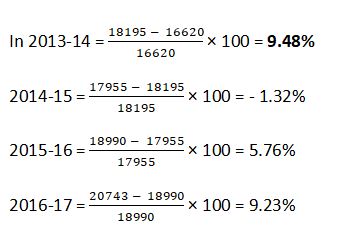Question
In which of the following years is the percentage
increase/ decrease in the total income of the Airlines the maximum in comparison to its previous year? Directions (96-100): Study the following bar graphs to answer the questions given below: Income of Indian Airways from the international and domestic flights.Solution

The cost price of article A and B is Rs. ‘X’ and Rs. (X + 750), respectively. Article A is sold at 20% profit while article B is sold at 10% loss. I...
A trader bought an article for Rs. 3000 and marked it 20% above of its cost price. If he sold it after giving a discount of Rs. 120 then find the profit...
A shopkeeper sets the marked price of an item at 50% higher than its cost price. He then offers two successive discounts of 20% and m% on the marked pri...
A shopkeeper sells an article for Rs 80 and earns thrice the profit that he would have earned on selling this article for Rs 69. Find the C.P of ...
'C' sells a laptop at a profit of 50%. Had the profit percentage earned on selling the laptop been numerically equal to the cost price of the laptop, th...
- The cost price of an item is Rs. (12n + 240). It is marked 50% above the cost price and sold after giving a discount of Rs. (4n + 80). If the profit earned...
- A shopkeeper purchased a refrigerator for Rs. 40,000 and sold it at Rs. 47,200. Find the profit percent earned.
A shopkeeper sold an article after offering two successive discounts of 21% and 25%, respectively. The marked price of the article is Rs. 2300. If the c...
A shopkeeper sold an article after giving a discount of 20% and made a profit of Rs.40. Find the difference between the marked price and selling price o...
Cost price of an article is Rs. 20,250. It is marked 48% above its cost price and sold after allowing 20% discount. Find the profit (in Rs.) earned
Relevant for Exams:



